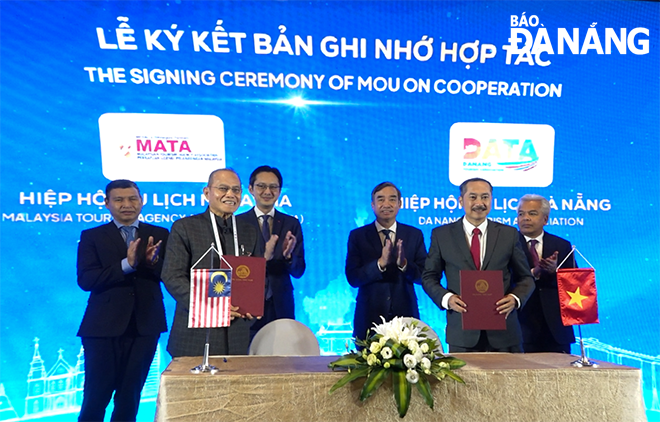High school students treat waste with enzymes
Three students in Ha Noi have successfully used an enzyme called FBV41 to eliminate toxins in agriculture waste and dye-factory waste.
The students, Hoang Tung, Mai Dieu Quynh and Dang Tran Quang, attend the 11th grade at the Viet Nam -Germany High School in Ha Noi.
The enzyme, which was tested with laboratory-standard dyed water for 90 minutes, disposed 70-96 percent of the color. The proportions were 78-94 percent when the enzyme was tested for two hours with real waste water from a dyeing factory.
 |
| Tung and Quynh receive the third prize at the SSYS 9th Regional Congress held in Malaysia on March 3-7 |
As for agricultural waste, the two-day decomposition rate was 48-96 percent higher than other normal methods.
To find samples for their research, the three students walked many kilometers in the rain to the Ba Vi area to collect deadwood. They went during a rainy period because microorganisms are more active in such conditions.
After the trip, the three students went to Hung Yen Province to find straw samples and the traveled to the Nam Dinh Textile Factory to get waste water samples.
After collecting samples for their experiments, they worked at laboratories every day.
Quynh said they had to redo the experiments twice because the laboratory became contaminated with bacteria.
During four months, from late 2012 to early 2013, the three young scientists were busy putting the deadwood and straw samples into plates and using color indicators to find s suitable enzyme.
Their research work received first prize at a competition for high school students in Hanoi in 2013.
The school’s management board decided to submit the work to Southeast Asian Ministers of Education Organisation (SEAMEO) for its Search for Young Scientists (SSYS) competition in March 2014. The work was titled “A study of a laccase enzyme to be used for sustainable development”.
The work won third prize at the SSYS 9th Regional Congress held in Malaysia on March 3-7. The results, according to Nguyen Boi Quynh, Vice Headmaster of the Viet Nam -Germany High School, did not surprise her.
“Both the students are excellent and they have passion for studies and scientific research,” Quynh said. “Their research has great significance in environmental protection. And their English skills are also good. All these made me feel secure about their works”.
Quynh and Tung said the biggest achievements they have obtained are not the third prize or the glory. They feel happy because they have discovered what they should follow in the future.
Quynh said she wishes to continue research work, while Tung said his business knowledge had improved considerably. “I wish this invention can be commercialized and applied on a large scale,” he said.




